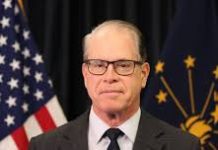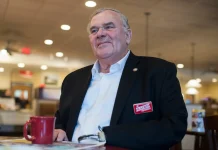Renowned physicist Melba Phillips, alumnae of Oakland City College, will be honored Friday, Nov. 1, with a historical marker on the campus of Oakland City University.  Â
 Dr. Phillips had established her credentials as a master teacher and scientist. She helped organize the founding of the Federation of American Scientists in 1945. She was the first woman to be president of the American Association of Physics Teachers in 1966. Last year, the American Physical Society gave her its Joseph Burton Forum Award for her education work and for being “a model of a principled scientist.”
  She was one of the first doctoral students of J. Robert Oppenheimer, who led the effort to build the first atomic bomb. In 1935, they published an explanation for the unexpected behavior of accelerated nuclei of “heavy hydrogen” atoms, which became known as the Oppenheimer-Phillips effect.Â
  Jobs were scarce for academics during the Depression and scarcer for women working in science, so Dr. Phillips held a series of temporary jobs before she landed her first permanent position at Brooklyn College in 1938.Â
During the McCarthy era, Dr. Phillips was teaching at Brooklyn College in 1952, with a part-time position at the Columbia University Radiation Laboratory. The Senate Judiciary Committee’s internal security subcommittee, which was investigating some of her friends and colleagues, summoned her to testify. She appeared but refused to answer the subcommittee’s questions.
 After her 1952 firing and five years of unemployment, she wrote two textbooks, “Principles of Physical Science” (1957), with Francis Bonner, and “Classical Electricity and Magnetism” (1955), with W.K.H. Panofsky, which is still used in undergraduate and graduate physics classes. She also edited books on the history of physics. she became associate director of a teacher-training institute at Washington University in St. Louis. She joined the University of Chicago faculty in 1962 and worked there until her retirement 10 years later. Under her influence, the university began teaching physical science courses to non-science majors.Â
Â




